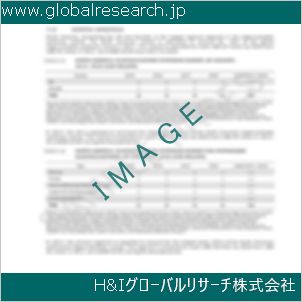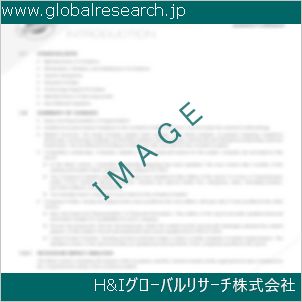Table of Contents
1 Industry Overview of Polyisobutene
1.1 Definition and Specifications of Polyisobutene
1.1.1 Definition of Polyisobutene
1.1.2 Specifications of Polyisobutene
1.2 Classification of Polyisobutene
1.3 Applications of Polyisobutene
1.3.1 Nuclear Application
1.3.2 Non-Nuclear Application
1.4 Industry Chain Structure of Polyisobutene
1.5 Industry Overview and Major Regions Status of Polyisobutene
1.5.1 Industry Overview of Polyisobutene
1.5.2 Global Major Regions Status of Polyisobutene
1.6 Industry Policy Analysis of Polyisobutene
1.7 Industry News Analysis of Polyisobutene
2 Manufacturing Cost Structure Analysis of Polyisobutene
2.1 Raw Material Suppliers and Price Analysis of Polyisobutene
2.2 Equipment Suppliers and Price Analysis of Polyisobutene
2.3 Labor Cost Analysis of Polyisobutene
2.4 Other Costs Analysis of Polyisobutene
2.5 Manufacturing Cost Structure Analysis of Polyisobutene
2.6 Manufacturing Process Analysis of Polyisobutene
3 Technical Data and Manufacturing Plants Analysis of Polyisobutene
3.1 Capacity and Commercial Production Date of Global Polyisobutene Major Manufacturers in 2023
3.2 Manufacturing Plants Distribution of Global Polyisobutene Major Manufacturers in 2023
3.3 R&D Status and Technology Source of Global Polyisobutene Major Manufacturers in 2023
3.4 Raw Materials Sources Analysis of Global Polyisobutene Major Manufacturers in 2023
4 Capacity, Production and Revenue Analysis of Polyisobutene by Regions, Types and Manufacturers
4.1 Global Capacity, Production and Revenue of Polyisobutene by Regions 2019-2024
4.2 Global and Major Regions Capacity, Production, Revenue and Growth Rate of Polyisobutene 2019-2024
4.3 Global Capacity, Production and Revenue of Polyisobutene by Types 2019-2024
4.4 Global Capacity, Production and Revenue of Polyisobutene by Manufacturers 2019-2024
5 Price, Cost, Gross and Gross Margin Analysis of Polyisobutene by Regions, Types and Manufacturers
5.1 Price, Cost, Gross and Gross Margin Analysis of Polyisobutene by Regions 2019-2024
5.2 Price, Cost, Gross and Gross Margin Analysis of Polyisobutene by Types 2019-2024
5.3 Price, Cost, Gross and Gross Margin Analysis of Polyisobutene by Manufacturers 2019-2024
6 Consumption Volume, Consumption Value and Sale Price Analysis of Polyisobutene by Regions, Types and Applications
6.1 Global Consumption Volume and Consumption Value of Polyisobutene by Regions 2019-2024
6.2 Global and Major Regions Consumption Volume, Consumption Value and Growth Rate of Polyisobutene 2019-2024
6.3 Global Consumption Volume and Consumption Value of Polyisobutene by Types 2019-2024
6.4 Global Consumption Volume and Consumption Value of Polyisobutene by Applications 2019-2024
6.5 Sale Price of Polyisobutene by Regions 2019-2024
6.6 Sale Price of Polyisobutene by Types 2019-2024
6.7 Sale Price of Polyisobutene by Applications 2019-2024
6.8 Market Share Analysis of Polyisobutene by Different Sale Price Levels
7 Supply, Import, Export and Consumption Analysis of Polyisobutene
7.1 Supply, Consumption and Gap of Polyisobutene 2019-2024
7.2 Global Capacity, Production, Price, Cost, Revenue, Supply, Import, Export and Consumption of Polyisobutene 2019-2024
7.3 USA Capacity, Production, Price, Cost, Revenue, Supply, Import, Export and Consumption of Polyisobutene 2019-2024
7.4 EU Capacity, Production, Price, Cost, Revenue, Supply, Import, Export and Consumption of Polyisobutene 2019-2024
7.5 China Capacity, Production, Price, Cost, Revenue, Supply, Import, Export and Consumption of Polyisobutene 2019-2024
7.6 Japan Capacity, Production, Price, Cost, Revenue, Supply, Import, Export and Consumption of Polyisobutene 2019-2024
8 Major Manufacturers Analysis of Polyisobutene
8.1 Manufacturer One
8.1.1 Company Profile
8.1.2 Product Picture and Specifications
8.1.2.1 Type I
8.1.2.2 Type II
8.1.2.3 Type III
8.1.3 Capacity, Production, Price, Cost, Gross and Revenue
8.1.4 Contact Information
8.2 Manufacturer Two
8.2.1 Company Profile
8.2.2 Product Picture and Specifications
8.2.2.1 Type I
8.2.2.2 Type II
8.2.2.3 Type III
8.2.3 Capacity, Production, Price, Cost, Gross and Revenue
8.2.4 Contact Information
8.3 Manufacturer Three
8.3.1 Company Profile
8.3.2 Product Picture and Specifications
8.3.2.1 Type I
8.3.2.2 Type II
8.3.2.3 Type III
8.3.3 Capacity, Production, Price, Cost, Gross and Revenue
8.3.4 Contact Information
8.4 Manufacturer Four
8.4.1 Company Profile
8.4.2 Product Picture and Specifications
8.4.2.1 Type I
8.4.2.2 Type II
8.4.2.3 Type III
8.4.3 Capacity, Production, Price, Cost, Gross and Revenue
8.4.4 Contact Information
8.5 Manufacturer Five
8.5.1 Company Profile
8.5.2 Product Picture and Specifications
8.5.2.1 Type I
8.5.2.2 Type II
8.5.2.3 Type III
8.5.3 Capacity, Production, Price, Cost, Gross and Revenue
8.5.4 Contact Information
…
9 Marketing Trader or Distributor Analysis of Polyisobutene
9.1 Marketing Channels Status of Polyisobutene
9.2 Traders or Distributors with Contact Information of Polyisobutene by Regions
9.3 Ex-work Price, Channel Price and End Buyer Price Analysis of Polyisobutene
9.4 Regional Import, Export and Trade Analysis of Polyisobutene
10 Industry Chain Analysis of Polyisobutene
10.1 Upstream Major Raw Materials Suppliers Analysis of Polyisobutene
10.1.1 Major Raw Materials Suppliers with Contact Information Analysis of Polyisobutene
10.1.2 Major Raw Materials Suppliers with Supply Volume Analysis of Polyisobutene by Regions
10.2 Upstream Major Equipment Suppliers Analysis of Polyisobutene
10.2.1 Major Equipment Suppliers with Contact Information Analysis of Polyisobutene
10.2.2 Major Equipment Suppliers with Product Pictures Analysis of Polyisobutene by Regions
10.3 Downstream Major Consumers Analysis of Polyisobutene
10.3.1 Major Consumers with Contact Information Analysis of Polyisobutene
10.3.2 Major Consumers with Consumption Volume Analysis of Polyisobutene by Regions
10.4 Supply Chain Relationship Analysis of Polyisobutene
11 Development Trend of Analysis of Polyisobutene
11.1 Capacity, Production and Revenue Forecast of Polyisobutene by Regions and Types
11.1.1 Global Capacity, Production and Revenue of Polyisobutene by Regions 2024-2029
11.1.2 Global and Major Regions Capacity, Production, Revenue and Growth Rate of Polyisobutene 2024-2029
11.1.3 Global Capacity, Production and Revenue of Polyisobutene by Types 2024-2029
11.2 Consumption Volume and Consumption Value Forecast of Polyisobutene by Regions, Types and Applications
11.2.1 Global Consumption Volume and Consumption Value of Polyisobutene by Regions 2024-2029
11.2.2 Global and Major Regions Consumption Volume, Consumption Value and Growth Rate of Polyisobutene 2024-2029
11.2.3 Global Consumption Volume and Consumption Value of Polyisobutene by Types 2024-2029
11.2.4 Global Consumption Volume and Consumption Value of Polyisobutene by Applications 2024-2029
11.3 Supply, Import, Export and Consumption Forecast of Polyisobutene
11.3.1 Supply, Consumption and Gap of Polyisobutene 2024-2029
11.3.2 Global Capacity, Production, Price, Cost, Revenue, Supply, Import, Export and Consumption of Polyisobutene 2024-2029
11.3.3 USA Capacity, Production, Price, Cost, Revenue, Supply, Import, Export and Consumption of Polyisobutene 2024-2029
11.3.4 EU Capacity, Production, Price, Cost, Revenue, Supply, Import, Export and Consumption of Polyisobutene 2024-2029
11.3.5 China Capacity, Production, Price, Cost, Revenue, Supply, Import, Export and Consumption of Polyisobutene 2024-2029
11.3.6 Japan Capacity, Production, Price, Cost, Revenue, Supply, Import, Export and Consumption of Polyisobutene 2024-2029
12 New Project Investment Feasibility Analysis of Polyisobutene
12.1 New Project SWOT Analysis of Polyisobutene
12.2 New Project Investment Feasibility Analysis of Polyisobutene
13 Conclusion of the Global Polyisobutene (CAS 9003-27-4) Industry 2024 Market Research Report
| ※参考情報 ポリイソブテン(Polyisobutene)は、主にイソブテンからポリマー化により得られる合成高分子材料で、化学式は(C4H8)nで表されます。CAS番号は9003-27-4で、独特の物理的特性と化学的特性を持っているため、様々な産業で広く利用されています。ポリイソブテンはその特性から、一般的にエラストマーとして知られる弾性体の一種に分類されます。 ポリイソブテンの最大の特徴は、その優れた柔軟性と粘性です。この特性により、ポリイソブテンは一般的に優れた接着剤、シーラント、さらには防水性材料の基礎として使用されます。さらに、ポリイソブテンは耐候性が高く、紫外線やオゾンに対する安定性も持っているため、屋外使用に適しています。また、低温特性も良好で、寒冷地域や冷凍環境下でもその性能を発揮します。 ポリイソブテンは、一般的にその分子量に応じて異なる特性を示すため、いくつかの種類に分類されます。代表的なものとしては、低分子量、高分子量、および中分子量のものがあり、それぞれが異なる応用分野で利用されます。低分子量のポリイソブテンは、主に接着剤や潤滑剤として使用されることが多く、高分子量のものはタイヤや工業用部品などの耐久性が求められる製品に利用されます。 用途に関しては、ポリイソブテンは多岐にわたります。まず、接着剤やシーラントとしての用途が非常に多く、これはその優れた粘着性と弾性によるものです。特に、建設業界や自動車産業では、ポリイソブテンを基とした接着剤がふんだんに使用されています。また、包装材料やコンテナの製造にも用いられることがあり、防水性や耐候性に優れた特性が評価されています。 さらに、ポリイソブテンは化粧品産業でも利用されています。この材料は、リップバームやモイスチャライザーなど、多くの化粧品フォーミュレーションに添加され、製品の質感や持続性を向上させる役割を果たしています。特に、肌に優しい性質を持つため、敏感肌向けの製品でも広く使われています。 ポリイソブテンは、石油化学製品に由来する材料ですが、環境に優しい技術の発展に伴い、バイオベースのポリイソブテンの開発も進んでいます。これにより、従来の石油由来のポリイソブテンに代わる持続可能な材料が市場に投入されることが期待されています。 技術的には、ポリイソブテンは主に連鎖重合によって合成されます。このプロセスでは、イソブテンを触媒存在下で重合することでポリマーが生成されます。触媒の種類や反応条件を変えることにより、ポリマーの特性を調整することが可能です。また、最近では、機能性添加剤を組み合わせて、改良された特性を持つポリイソブテンの開発も進められています。 ポリイソブテンのリサイクル技術にも注目が集まっています。廃棄されたポリイソブテン製品を再利用するための方法が研究されており、効果的な分解プロセスや再合成技術が試されています。このような取り組みは、循環型経済の実現に寄与するもので、環境への影響を減少させることが期待されています。 総じて、ポリイソブテンはその優れた物理的および化学的特性から、様々な分野で重要な役割を果たしている材料であり、今後の技術革新や持続可能性の向上に向けてさらに進化することが期待されています。新しい用途の発見や機能強化のための研究が続けられる中で、ポリイソブテンは将来的にも重要な素材として位置づけられることでしょう。 |
❖ 免責事項 ❖
http://www.globalresearch.jp/disclaimer












